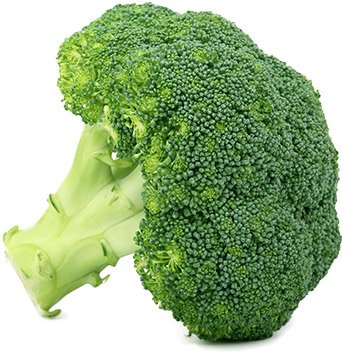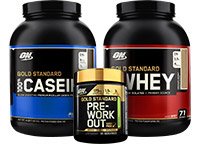
How To Get Big And Stay Ripped!
There's no easy, magic program for building muscle while staying lean, but that doesn't mean it's impossible. To get started, follow athlete Brock Cunico's nutrition, training, and supplementation guidelines!
You may have clicked on this article hoping to read some sort of magic trick for adding muscle while you stay shredded. If that's true, then you're in the wrong place. I'm here to tell you that putting on muscle without adding fat can be accomplished only through long-term dedication to a structured eating and training plan.
When I'm not working, 90 percent of my life is devoted to cooking and preparing meals, eating clean, training hard, and focusing my efforts on reaching my goals. That leaves 10 percent to enjoy the "normal" things in life, like going to a movie or eating some pizza. Multiply this structured lifestyle day in and day out over years, and only then can you start to imagine what it does to a person's physique.
Do you think my lifestyle is excessive? Maybe it is, but then again, I don't intend to be "average" in anything I do. What I want is built from nothing but hard work. If this is the physique you want, you'll have to learn to do the same. Finding the right combination of work ethic, structure, rest, and play might just be what you're missing to go from an average Joe to a pro!
Keep consistency and structure in mind as you read through the tips below. You can't implement them for a month or two and expect to see results. Success comes from lifelong dedication to making good choices.

Get Big, Stay Ripped Nutrition Guidelines
Nutrition is the most important factor in any health and fitness goals. But in order to build muscle and stay lean, you have to do a little more than just "eat clean." Yes, putting whole, nutritious food in your body will go a long way toward helping you attain your desired physique, but getting big and staying ripped can be a little more complex.

I don't want to make nutrition super complicated, though, so I want you to follow one fairly specific rule: Limit your carbohydrates. When I'm not training, I try to keep my meals low carb. That means instead of rice, noodles, or oatmeal, I eat vegetables.
I increase the amount of carbohydrates I eat before and after I train. I like to eat some carbs before I train so I have lots of energy and my muscles are full of enough glycogen (stored energy) to make it through a workout. Then, I eat my highest-carb meal of the day post-workout. This plan has worked really well for me over the past 10 years.
On rest days, I eat fewer carbs and bump up my protein intake. This helps keep my abs on point and my muscles in recovery mode.
Along with high-protein meals, make sure you get some healthy fats in your diet. Dietary fats are important to keep your body's systems functioning correctly. Plus, when you're limiting your carb intake, fat calories will prevent your energy levels from plummeting.
Although I'm a proponent of following a fairly strict eating schedule, I do eat weekly cheat meals. However, I like to eat them after I work out, on days I'm training a lagging muscle group. Scheduling those extra calories to come after tough training sessions will help promote extra growth, satisfy your taste buds, and help you recover. Don't make the mistake of eating an entire pizza for your cheat meal. Eat your treat in moderation.
Although this "plan" is a simple one, it works well because each day is almost identical to the one before it. My activities, timing, and food are basically the same no matter what day they fall on. The same should go for you. The differences in your plan will be the amounts and types of food you eat so they coincide with your body type, goals, and gender.
Get Big, Stay Ripped Training Guidelines
You need to bring the same mindset to your training protocol as you do to your nutrition regimen. It seems like a no-brainer, but you'd be surprised to know how many people think training inconsistently or without a detailed plan will provide results.
Although there are multiple strategies and ideologies about the best ways to grow muscle, I think the best way is to focus on a single muscle group per day. Training one muscle group per day will provide each muscle the volume and time under tension it needs in order to sustain enough trauma so the muscles can subsequently recover and grow.
I suggest creating a routine that will allow you to train 5-6 days per week. Each session should only take you about 60-90 minutes. It's important to limit the amount of time you spend in the gym. Training too long or too often can make recovery really difficult, which means you may not be able to grow like you should.
It's also important that you keep your lifting sessions high-volume and high-effort. Your personal training intensity is the number one factor for positive results. You can't go through the motions and expect growth. Like most things in life, you'll only get out what you put in.
I suggest doing something like 20-30 sets per muscle group. These high-volume sessions will not only destroy your muscles, but they will keep your heart rate high throughout your training sessions. Your pumping heart will help burn extra calories and boost your metabolic rate, so you can burn fat long after you're done lifting. If you keep at it, your shred meter will be at an all-time high!
Although there's nothing like straight sets to set up a good workout, incorporating dropsets, supersets, and compound sets into your training sessions will increase the length of the sets, helping you add muscle density and muscular endurance. Use short rest periods of around 30-60 seconds when you're lifting lighter weight, and longer rest periods of around 1-2 minutes when you're lifting heavier weight.
Because my lifting sessions are fast-paced and intense, I don't do much extra cardio. But if you'd like to put more cardio in your program, perform high-intensity intervals for about 20-30 minutes, 2-3 times per week. Alternate these cardio days with abdominal training. Choose 3-4 core exercises and do 3-4 sets of 25-50 reps per exercise. Although your diet has the biggest influence on how your abs look, doing 400-500 reps a few times per week will only improve them!
Get Big, Stay Ripped Supplement Guidelines
Although I believe that supplements can help people reach their goals, I don't believe in prescribing the same supplements for everyone. Each of us has a different body type and a different goal, so, what works for one person may not work for you.
That being said, I think there are some basic supps that most people can utilize for muscle-building and recovery. These are the supplements I use on a daily basis:
First, I always suggest a whey and casein protein powder. Whey is fast-digesting and great around your workouts, while casein is slower-digesting and perfect before bed or during stretches without food. Quite frankly, building muscle takes a lot of protein, so supplementing with quality whey and casein can be really useful when you need a healthy snack or a pre-bedtime treat.
Because I like to have carbs post-workout, I suggest using a post-workout supplement that includes protein and carbs, which will replenish your glycogen stores and help kick-start growth. This potent combo of protein and carbs is one of the best things you can do for recovery.
For performance gains, I recommend creatine and BCAAs. Creatine can help increase your strength and size, while BCAAs boost your recovery capacity and may reduce exercise-induced soreness.
Finally, I supplement with healthy fats like CLA, fish oil, and flaxseed oil. Using CLA helps keep me lean, and fish oil is good for my joints, skin, hair, and heart. When I need some extra healthy fat in my diet, a tablespoon or two of flax oil does the trick.
Stay Consistent, Get Results
It's important to note that these guidelines are just that: guidelines. They're not laws you have to follow. However, if you want to see results, you have to stay consistent with your diet, nutrition, and supplement plan. What I've written will help you get started, but unless you're dedicated to a structured lifestyle, you probably won't see that lean, swole reflection in the mirror!



